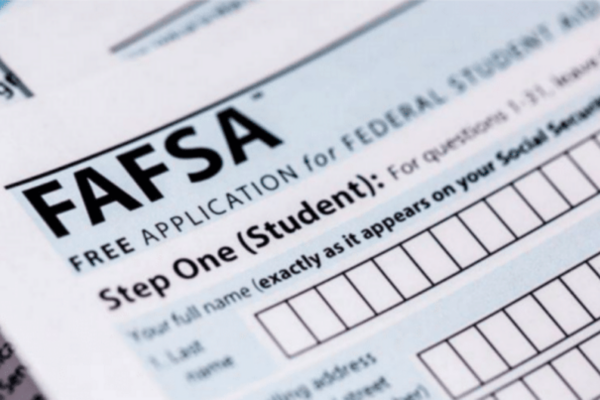Once you understand the basics of paying for college, it’s time to dive deeper into an essential piece of the financial aid equation—the FAFSA, which stands for the Free Application for Federal Student Aid. Our FAFSA 101 below covers the who, what, when, where, and why of applying for federal aid.
The Better FAFSA
In response to legislation enacted by the US Congress, the FAFSA is getting its first major overhaul in 40 years with the intent of streamlining the application process and making it easier for more students to complete it. Here are a few things to know about the new 2024-25 “Better FAFSA.”
The FAFSA will open in December instead of October this year. This means that you will submit your FAFSA in December 2023 to receive financial aid offers for the 2024-25 academic year.
The FAFSA has fewer questions! Each contributor to your FAFSA will have to answer, at most, 49 questions instead of 108.
Everyone who contributes information to your FAFSA will need an FSA ID. Every contributor—anyone (student,the student’s spouse, a biological or adoptive parent, or the parent’s spouse) who’s required to provide information on the FAFSA form—will need an FSA ID to access and complete their section of the online form. Get a head start by creating your Federal Student Aid account now!
Consenting to a direct data exchange from the IRS is required. Everyone who contributes to your FAFSA will be required to provide consent for Federal Student Aid to recieve federal tax information from the IRS whether they filed taxes or not. This will make it easier for you and your parent(s) to enter financial information! Instead of manually inputting information from your/your parent(s) 2022 tax return, the FAFSA will automatically input the information for you.
If any contributor doesn’t provide consent you won’t be eligible for federal student aid.
Student Aid Index (SA) will replace Estimated Family Contribution (EFC). After submitting the FAFSA, you will receive a Student Aid Index (SAI) instead of an Expected Family Contribution (EFC). College financial aid offices, state agencies, and the federal government will use the SAI to determine eligibility for financial aid. A student with an SAI of 0 or below (it can be as low as -1,500) will be eligible for a full federal Pell Grant. Due to formula changes, the switch to SAI is expected to increase the number of students eligible for the Pell Grant!
Federal financial aid eligibility requirements have not changed. Please refer to Federal Student Aid’s financial aid eligibility requirements or contact your coach if you are unsure if you are eligible for federal aid.
Reach out to your Coach and visit Federal Student Aid’s Financial Aid Toolkit for more information!
What is the FAFSA?
FAFSA, Free Application for Federal Student Aid, is an online application that sends your information and that of your parents to schools for them to decipher how much money you need for school. It does not decide how much money you get; the schools do. Therefore, it is important to apply to multiple schools to have more financial opportunities.
Who is eligible?
The FAFSA is only available to students with US Citizenship, Permanent Residency, or certain visas. The FAFSA is open to students regardless of their parent’s citizenship status.
Why do I file the FAFSA?
The FAFSA is how institutions determine eligibility and how much financial aid students receive in the form of:
- Federal Loans
- Grants – Federal, State, and Institutional
- Work-Study
How do I file the FAFSA?
Step 1: Find the FAFSA
The FAFSA can be found at FAFSA.ED.GOV.
Step 2: Create an FSA ID
First you will need to create an FSA ID.
- If you are a dependent student, one of your parents or guardians will also need an FSA ID.
- Be sure to save your FSA ID so you can use it every year you submit your FAFSA!
- Store your FSA ID in a secure place, and never share your FSA ID with anyone.
Step 3: Determine your filing status
Check to see if you will file your FAFSA as an independent or dependent student by using this chart. If you are a dependent student, use this chart to identify whose tax information you will need to provide in addition to yours.
Step 4: File your taxes
Next, you will need to ensure that you and your parents filed last year’s taxes.
- For the 2023-2024 academic year, you will need the tax information from the income you received in 2021.
- For the 2024-2025 academic year, you will need the tax information from the income you received in 2022.
Step 5: Gather your tax information
The FAFSA requires that you use your parent’s tax information if you are considered a dependent student. Tax information includes:
- Tax return
- W2’s
- College Savings Accounts
- Information about businesses, assets, investments etc.
Please note that you do not have to pay any fees in order to file your FAFSA.
When filing your FAFSA use the Direct Data Exchange to Link to the IRS. This will allow the IRS to transfer your tax information directly into your FAFSA, and may prevent you from needing to verify any information further with your school. Send your FAFSA to as many as twenty schools at a time, but at least send it to all of the schools where you have applied or are considering applying. Your FSA ID will serve as your digital signature when you are ready to submit your FAFSA.
Verification
Verification refers to the process that schools use to confirm that the information provided on your FAFSA or TASFA is accurate. Students who are selected for verification will need to complete additional documentation in order for their financial aid application to be processed. The additional documentation may include submitting your tax return transcript or letter of non-filing from the IRS, completing a household size, income verification, or state residency worksheet, or it may involve completing documentation to verify that you are able to apply for financial aid as an independent student.
After submitting your FAFSA, be sure to contact the school and check your student portal frequently to ensure that they have all of the information they need from you. You will not be awarded financial aid until all verification materials have been submitted.
Talking to your parents about FAFSA
Free money is available to students who qualify, and MOST students qualify for some type of financial aid; even if that aid is only in the form of federal loans, the interest rates on federal loans are better than private loans. For dependent students, the FAFSA requires both student and parent information. It can seem complicated, but often, the form can be completed in about 30 minutes.
Next steps
You will not need to submit a FAFSA and a TASFA; you’ll only need to submit one or the other. If you do not meet the eligibility requirements for the FAFSA, then the TASFA may be an option for you.
If you know you are eligible for the FAFSA, let’s review how to apply to college.


